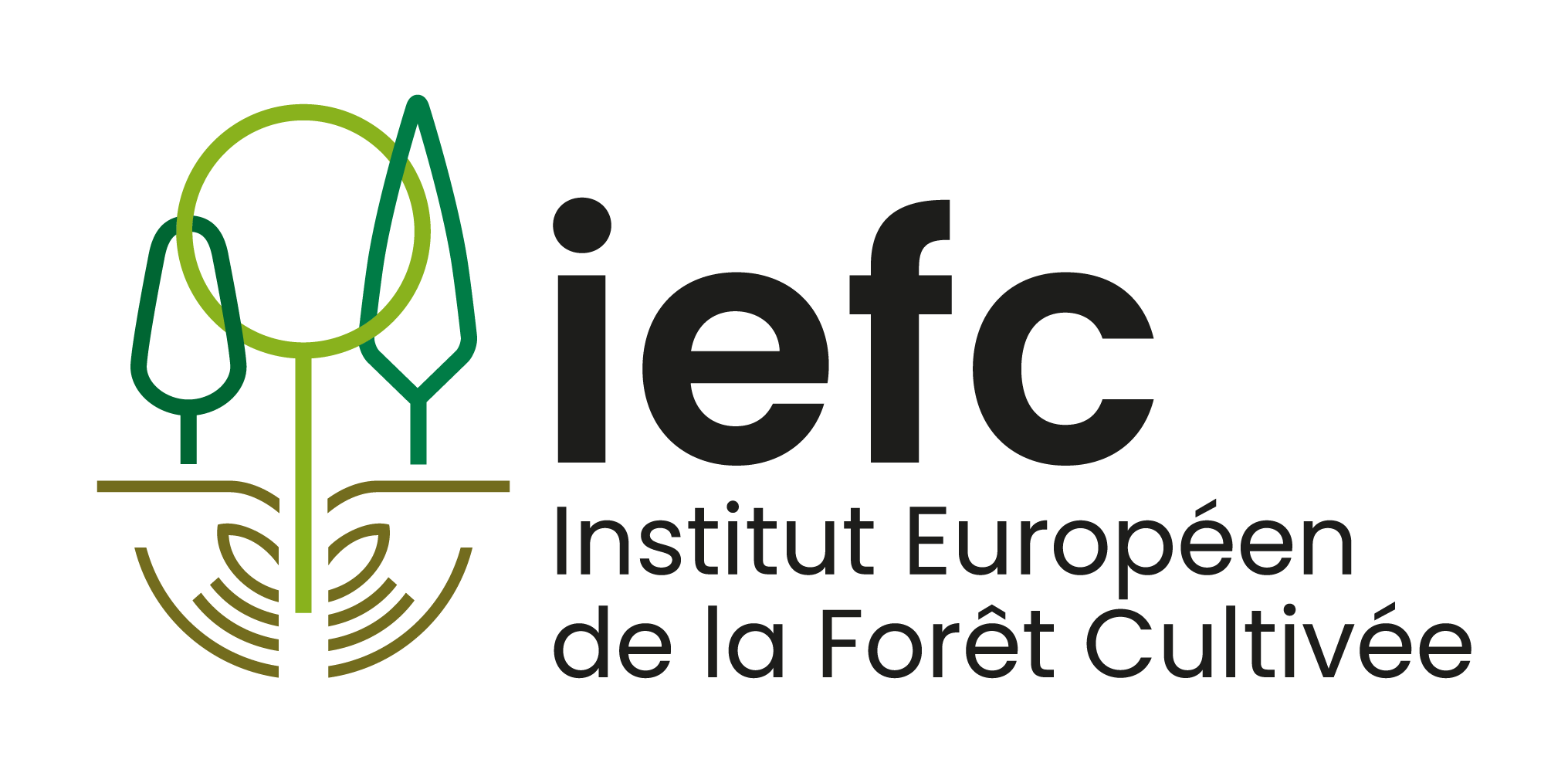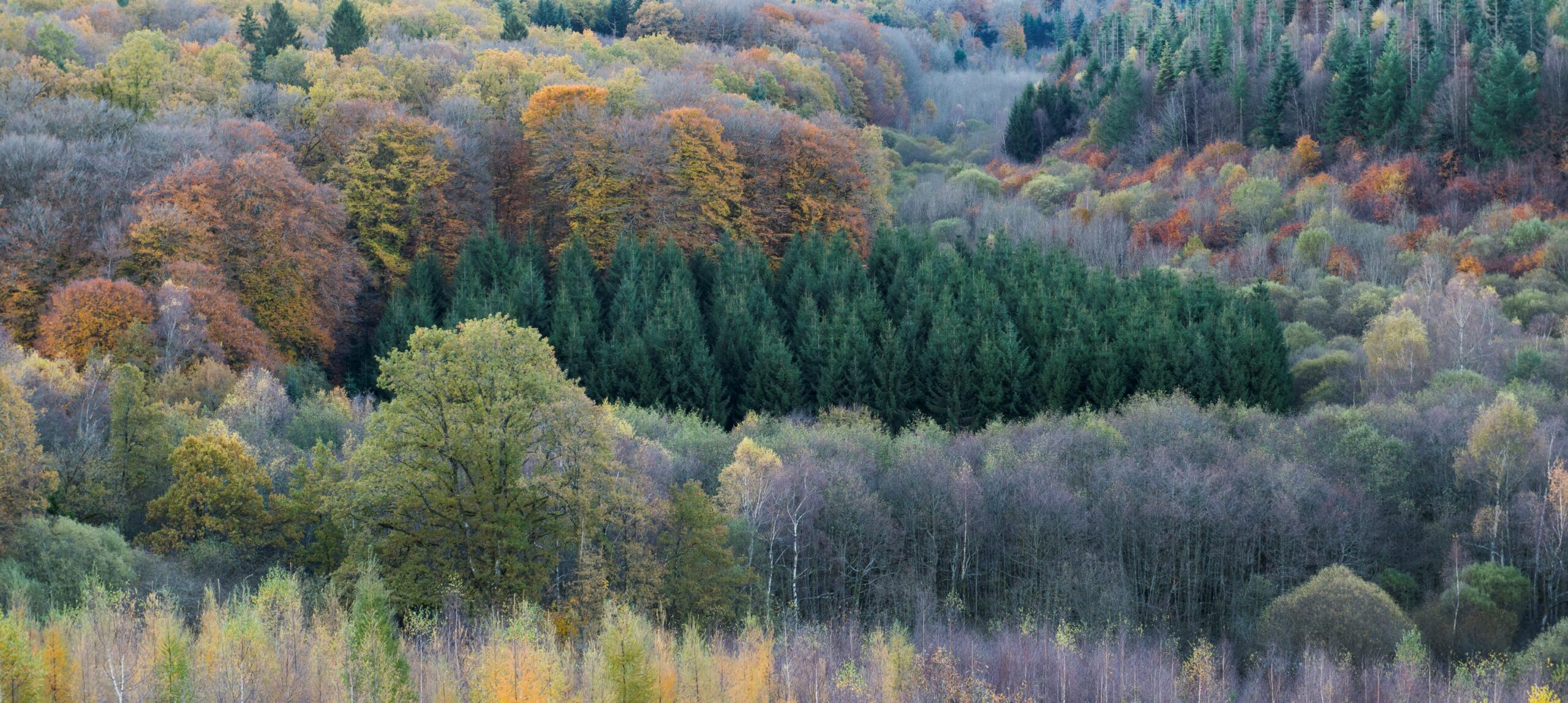In a French landscape famous for its agriculture and Limousin beef cattle, how can we best integrate forestry plantations to benefit local communities, support biodiversity and achieve climate resilience, and supply timber to decarbonize the construction industry?
In September 2022, the New Generation Plantations (NGP) platform and the IUFRO Task Force on planted forests led by IEFC held a study tour in Limousin, France. Organized in collaboration with local organizations FCBA and France Douglas, it brought together more than 60 participants from France, the UK and other European countries, including representatives from forestry companies, scientific researchers, NGOs and forestry students.
The three-day tour – NGP’s first in mainland Europe – included a one-day workshop in Limoges, visits to local sawmills and conifer plantations, and a dialogue session with local community leaders, as well as opportunities for listening, reflection and discussion. Here, we provide the context for these discussions and summarize some of the insights we gleaned.
BACKGROUND
France is approximately one-third woodland, forests and plantations. Like much of Europe, tree cover is expanding through a mix of active afforestation and changes in rural land management as some smaller farms are “abandoned”. In the last 30 years, the European forest area has increased by 9% to cover 227 million hectares – more than a third of the surface area of the continent.
The Limousin landscape is a mosaic of meadows and forests: oak, sweet chestnut and Douglas fir. Douglas fir plantations cover 90,000 hectares, or around 15% of the total forest area. They were established at the end of the Second World War, at a time when agricultural land was being abandoned and wood was in short supply. These plantations are now being harvested and replanted as individual stands are reaching maturity.
The region has a thriving sawmilling industry. Guillaume Guerin, president of the Limoges Metropole region who attended the study tour, spoke of his aspiration to develop high-value timber manufacturing. There has been investment in mass timber manufacturing to enable the production of very large glulam (glued laminated) timber beams for construction. These can be up to 40 metres long, limited only by the size of the factory.
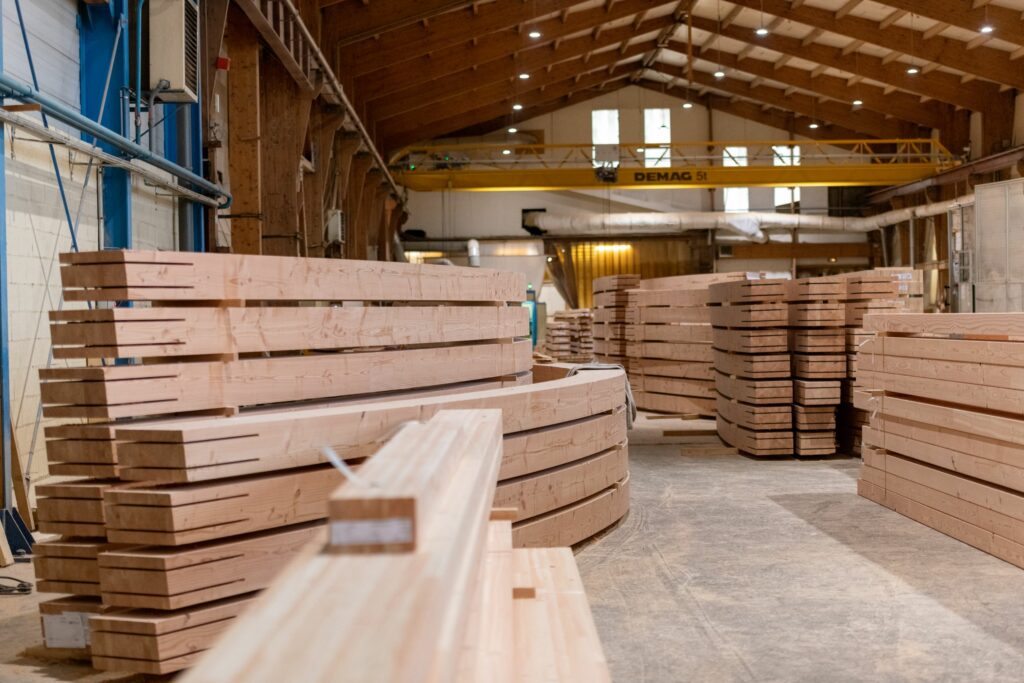
QUESTIONS
The participants in the study tour worked together to develop a number of key questions. When we visited the sawmill and plantations, we raised these questions with our hosts. On the final day, we worked together to try to answer them based on what we’d seen and heard and our own knowledge and experiences.
1. What are the opportunities and constraints of moving towards a more continuous cover system of forestry?
2.How do we ensure a balance between private ownership and public benefit?
3.How can we make our forests more resilient to climate change, and pest and diseases?
4.How can the existing timber industry better support local communities?
1. What are the opportunities and constraints of moving towards a more continuous cover system of forestry?
Our participants felt that this isn’t a black and white issue. Within the wider landscape, there are opportunities for a range of forest management systems. Continuous cover forestry might be more appropriate in areas with high visual landscape value, whereas traditional fell and restock can work in less visible areas where economic production is a priority.
A recurring issue was the need for better information and communication to explain why forest management choices are made. This might include the reasons for using continuous cover or not, but also why particular species are chosen. Digital media and online plans can help forest owners and managers explain these choices.
Clear-felling is often seen as harmful for nature, so it’s important to communicate that clear-fell and restocked sites can provide important habitat for different bird and butterfly species. Local ornithologists pointed out that nightjars, for example, favour open habitat and might not be found in a forest managed for continuous cover.
The Douglas fir we saw was managed on much longer rotations than is typical, often over 60 years from planting to harvest with two or three thinnings as the trees develop and mature. In comparison, a typical fast-growth plantation might be on a 10-20 year rotation with little or no thinning.
One of the key challenges is that we need to be thinking and working at the scale of the landscape rather than an individual forest or plantation. In a landscape with diverse land ownership and land management, this can be difficult to coordinate.
2.How do we ensure a balance between private ownership and public benefit?
Communication was again seen as a key issue, with a need for better explanation around forest management practices. People highlighted the challenges of explaining the market demand for timber and how forests can be better managed for biodiversity and carbon.
Forest planning at a local and at a landscape level is important to optimize the delivery of public benefit, but again this can be challenging in a landscape with many smaller forest owners.
Some respondents felt that there was a role for government in rewarding forest owners who deliver public benefits, such as access or biodiversity conservation, and possibly also in carbon-based taxation. The Schémas Régionaux de Gestion Sylvicole (SRGS) developed by the Centre National de la Propriété Forestière (CNPF) is supposed to help the government deliver public benefits in private forests.
Taxation was a recurring discussion point. According to one local stakeholder, while the sawmills and timber processors pay tax locally, the forest owner usually pays a lower tax: greater consideration of the relationship between forest owners, sawmillers and local government, and how taxes are collected and spent locally, could enhance public benefit and community relations. Most local concerns around plantation forestry in the region are about the physical changes in the forest of planting and harvesting, plus the impact of timber traffic on rural roads. Are there opportunities to use local taxation on forest ownership or timber growth to support local services and facilities?
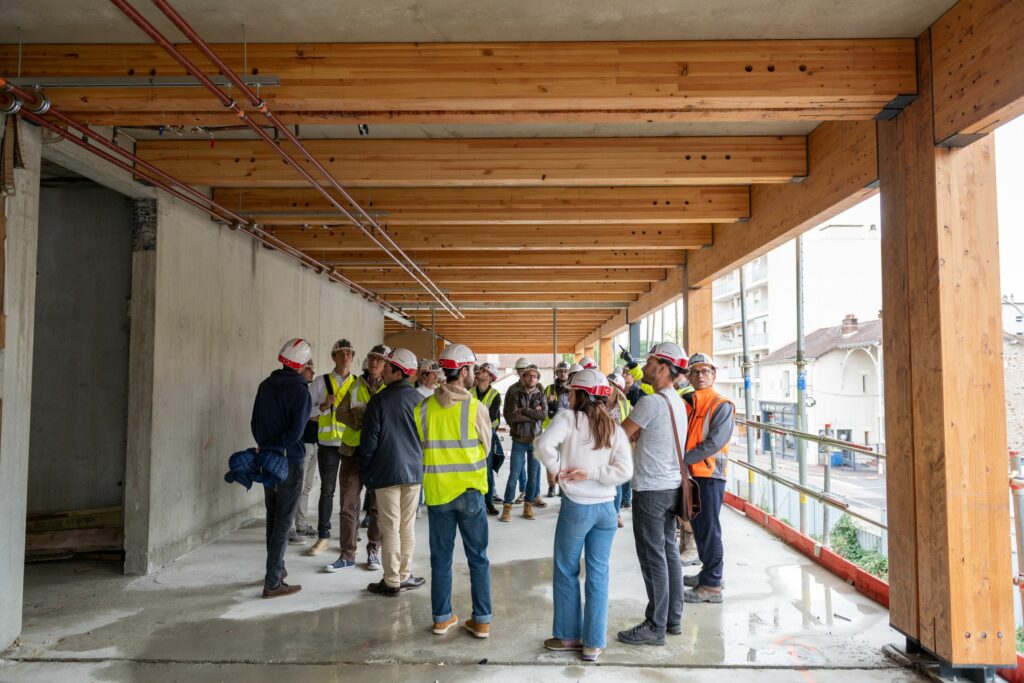
3.How can we make our forests more resilient to climate change, and pest and diseases?
Diversity in forests can exist at various levels – the overall landscape, an individual plantation, or a coupe/stand within that plantation. People felt that there should be more diverse and mixed forests, but there was some discussion about the scale at which this should occur. A key issue was how to be fair to smaller forest owners who have only a few productive hectares versus a larger owner who could more easily incorporate diversity into their plantation.
Some of the feedback here was about the trade-offs between more mixed forests using natural regeneration and the relative simplicity of managing even-aged and single-species plantations.
The Douglas fir in France is usually grown on 65-year rotations, which makes them more vulnerable to pests and disease than short-rotation timber crops like eucalyptus and acacia. Continuous cover forestry systems may be more or less susceptible to pest and disease: longer rotations increase their vulnerability, while greater genetic diversity can improve resilience. Compared with more natural forests, plantation forestry gives forest managers more opportunities to closely manage several factors which may help strengthen longer-term resilience in a rapidly changing climate.
Genetic diversity was highlighted as an important factor in view of increased pests and diseases. How can local foresters source more and better seed from a wider range of provenances? How can we better ensure that the next rotation of trees will cope with the climate we expect in 2050 and beyond?
4.How can the existing timber industry better support local communities?
Some of these questions and challenges recur whenever (and wherever) we hold study tours to talk about plantation forestry. In many countries these are large-scale plantations owned or managed by multinational companies. Here, plantations are much smaller, usually owned by people with connections to the area and mainly managed by co-operatives. Nevertheless, similar concerns are raised in the Limousin landscape.
Our participants were very clear that forest industries need to be much better at communicating with local communities, and also better at engaging on key local issues such as timber transport and providing recreation facilities (forest access).
This communication needs to be about forest management but also what the timber is used for. According to Julien Boutillon from CoSylva, if he is able to use local timber to manufacture glulam beams then 92% of the value of that beam remains in the local community. If imported timber is used it is less than 40%.
We held our final meeting in the stunning Aquapolis swimming centre. The roof of the building is made from Douglas fir glulam beams. These were manufactured locally and grown locally – perhaps they were felled and milled by people who swim in the pool. This should be celebrated.
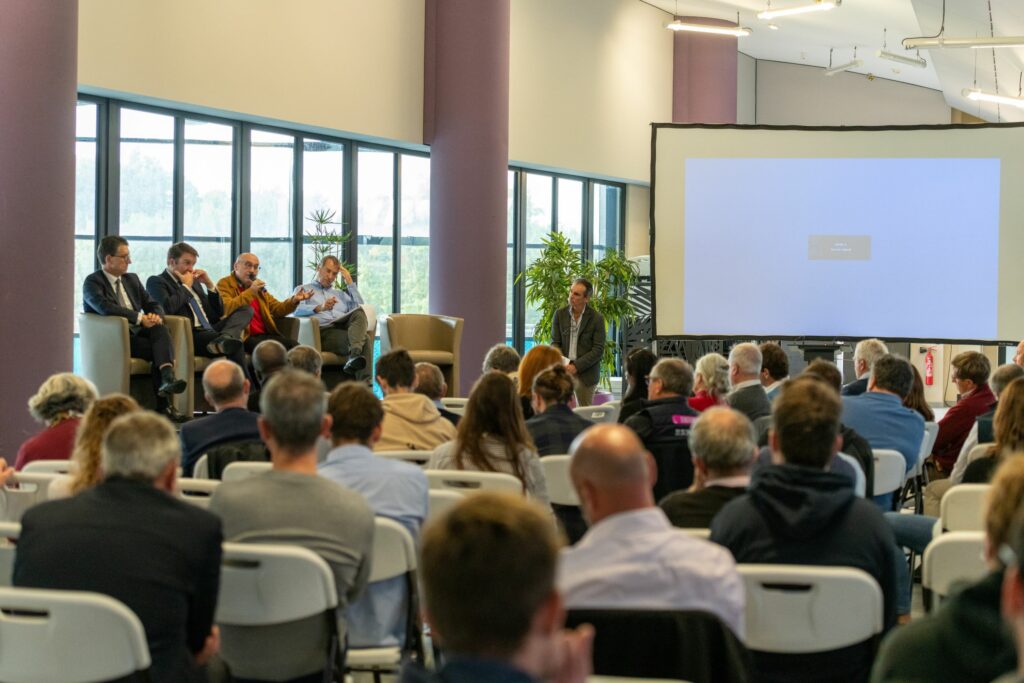
THE POWER OF DIVERSITY
Often when NGP organizes a study tour to discuss plantations, we visit large companies managing thousands of hectares of plantations and forests, usually focussed on a single large mill or processing facility.
In the Limoges region we saw a diversity of forest ownership, and a range of sawmills and timber processing facilities. In the forest we visited, management was undertaken by a cooperative, Alliance Forêt Bois, which has 43,000 forest owner members across France. These types of ownership and management models are often cited as delivering better outcomes both socially and environmentally. More diverse forest ownership usually means more diverse forestry objectives, and hence more diverse forests and woodlands.
THE BIOECONOMY AND THE GREEN NEW DEAL
The urgent need to address carbon emissions, particularly in the construction and packaging sector, will increase demand for wood to replace high-energy materials such as concrete, plastic and steel. We saw fantastic examples of modern timber construction in Limousin – but greater policy support is needed to help unlock its potential.
The European Green Deal is designed to improve the well-being and health of citizens and future generations by addressing a number of social and environmental challenges. But the forest bioeconomy is largely missing, according to attendees at a recent European Forest Institute webinar. Speakers at that event highlighted the importance of a forest bioeconomy in meeting the Green Deal’s climate-neutrality and conservation goals.
COMMUNICATION
The need for better communication was raised by many people – a familiar call on NGP study tours. There was a general feeling that the forest industry needs to be better at explaining what it does, why it does it and the benefits of growing more timber.
We need to be better at showing the connections between the opportunities of using more timber in construction and management choices in the forest. For example, Julien Boutillon from CoSylva said that to make his giant glulam beams, he needs “homogenous timber” – how can we balance that with a wider desire for heterogeneous forests?
The study tour highlighted the need for industry organizations like France Douglas and Alliance Forêt Bois to invest in better marketing and communication. There is also an opportunity for architects and other people involved with buildings such as the Aquapolis to become timber champions, to share the messages about low-carbon construction.
These are common challenges around the world, which NGP has been discussing for many years. We have to get better at communicating the trade-offs between the need for timber and fibre to urgently decarbonize our economies, with an aspiration for “wilder” forests and plantations.
Our trip to Limousin demonstrated that we already have some of the answers to our questions, but we need to be better at listening and communicating with a wider audience.
www.newgenerationplantations.org
Andrew Heald, Director, NGPTA
Photo Credit: Yoann Portejoie
